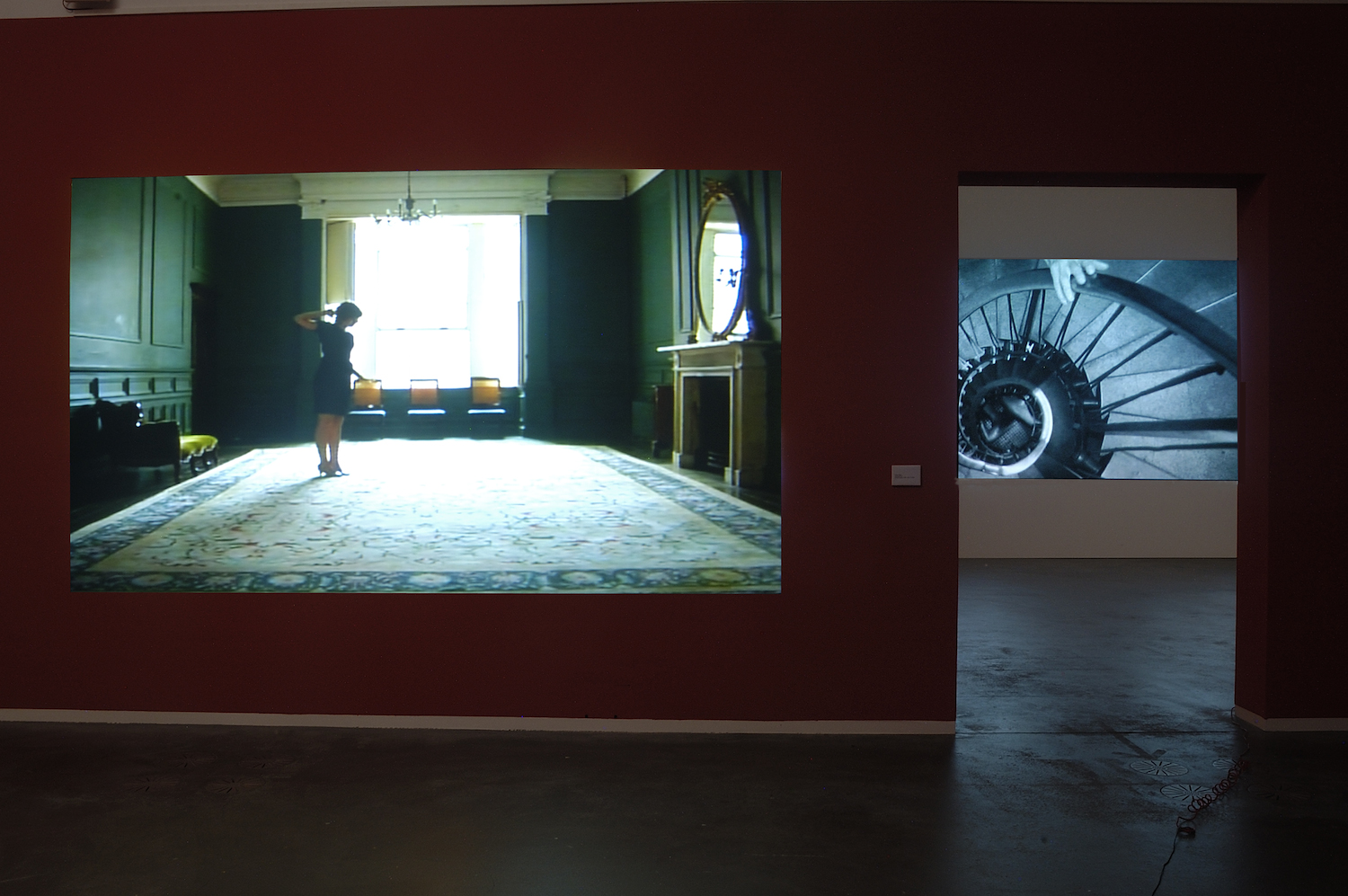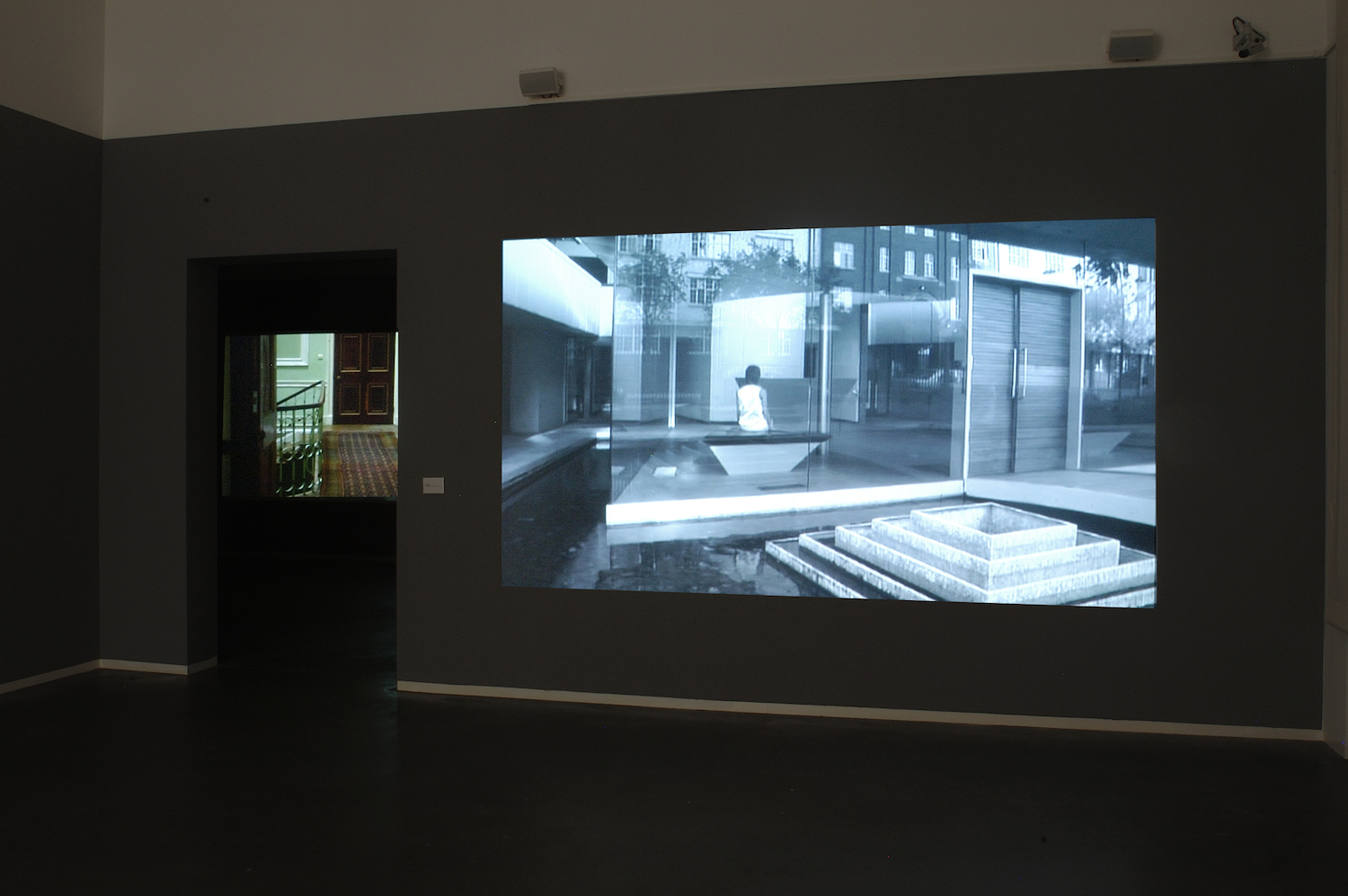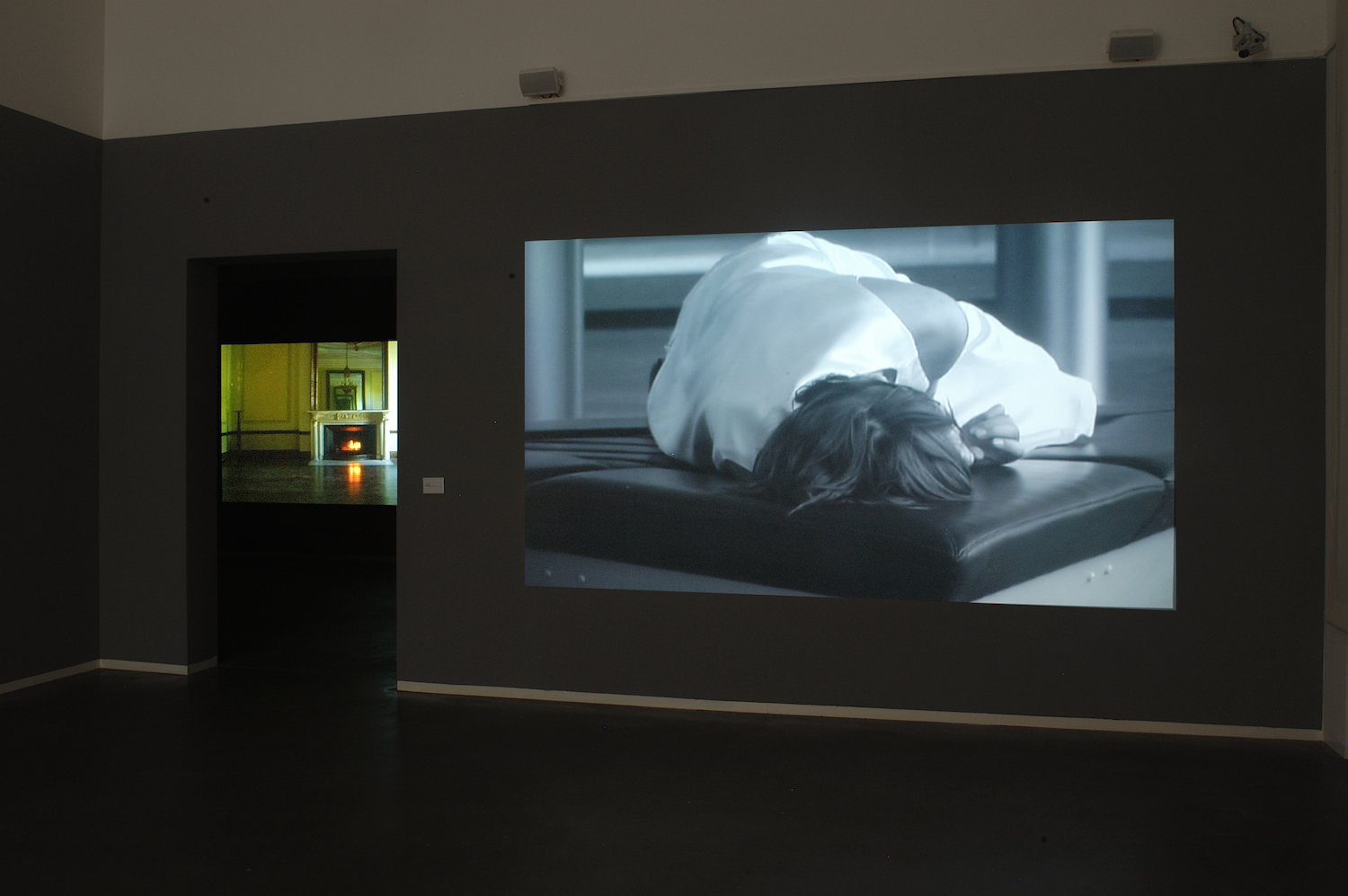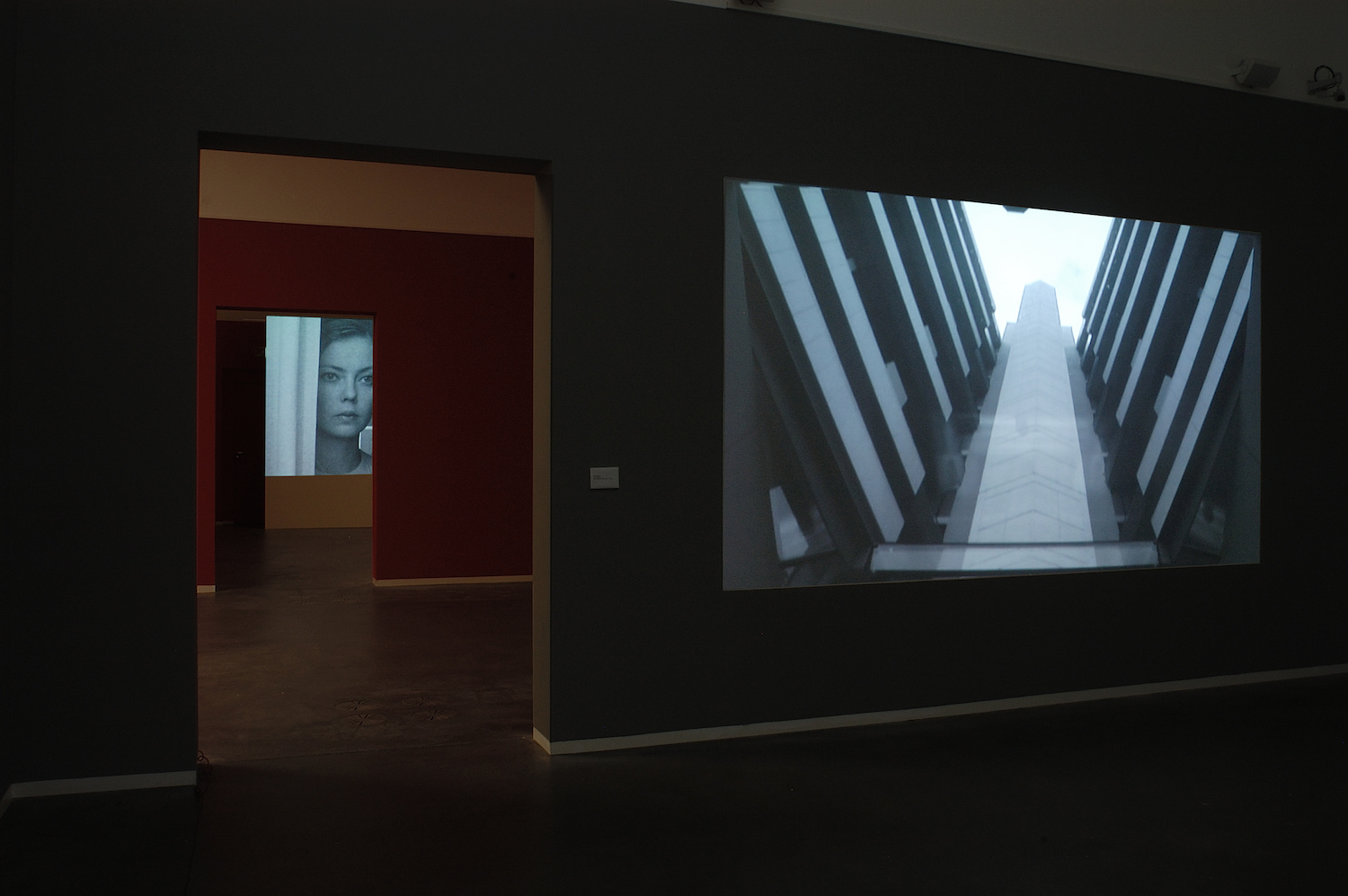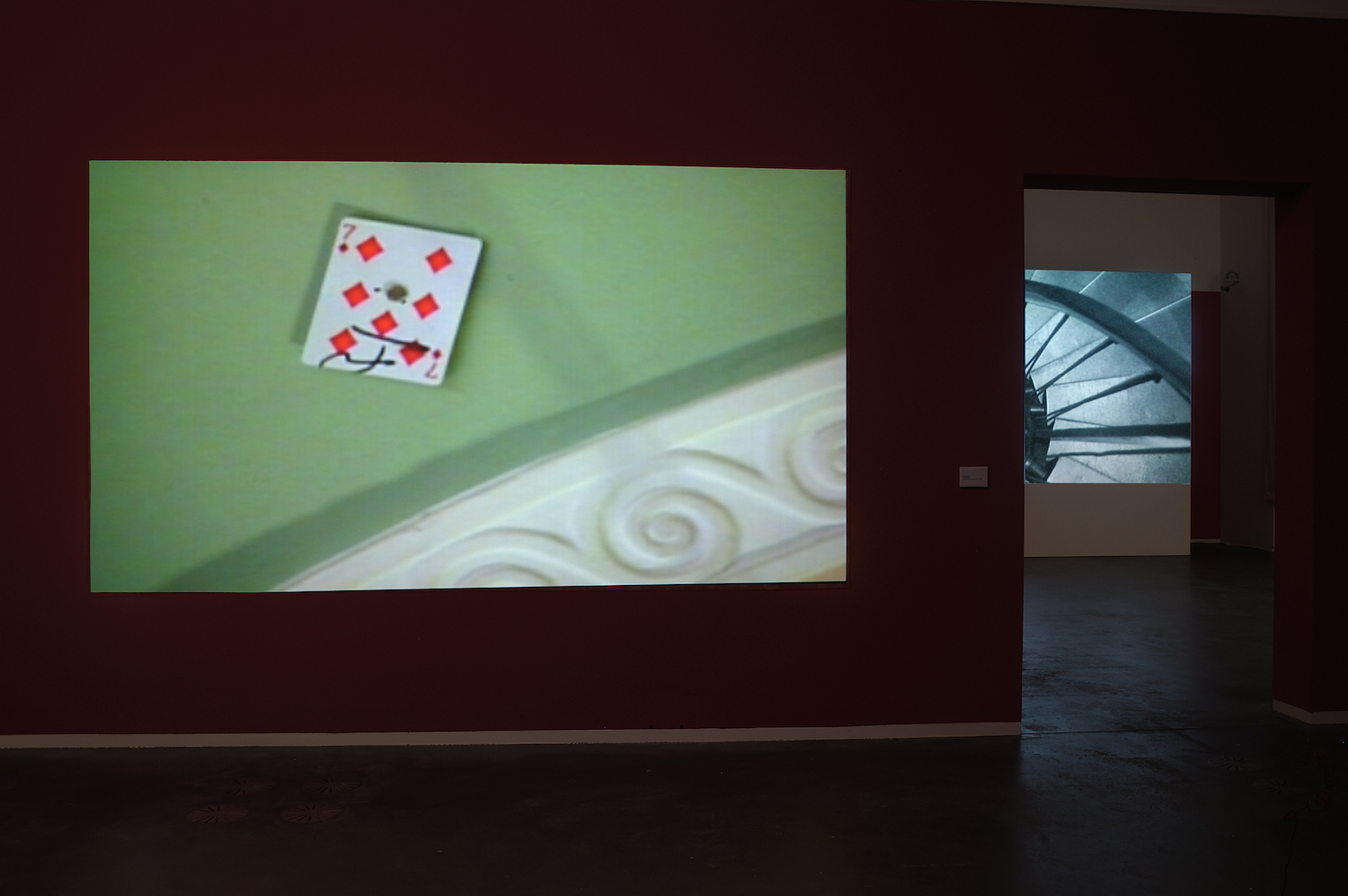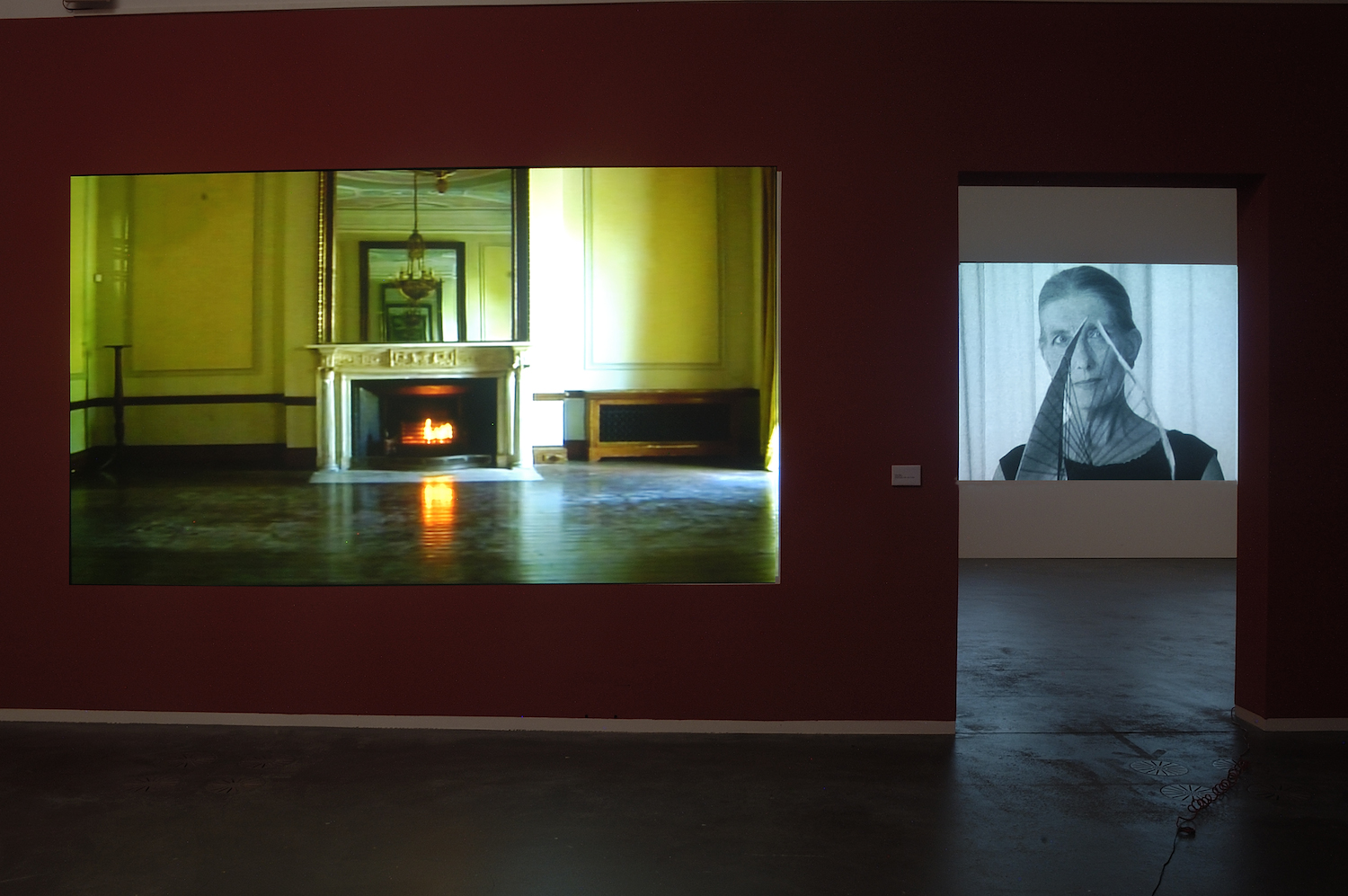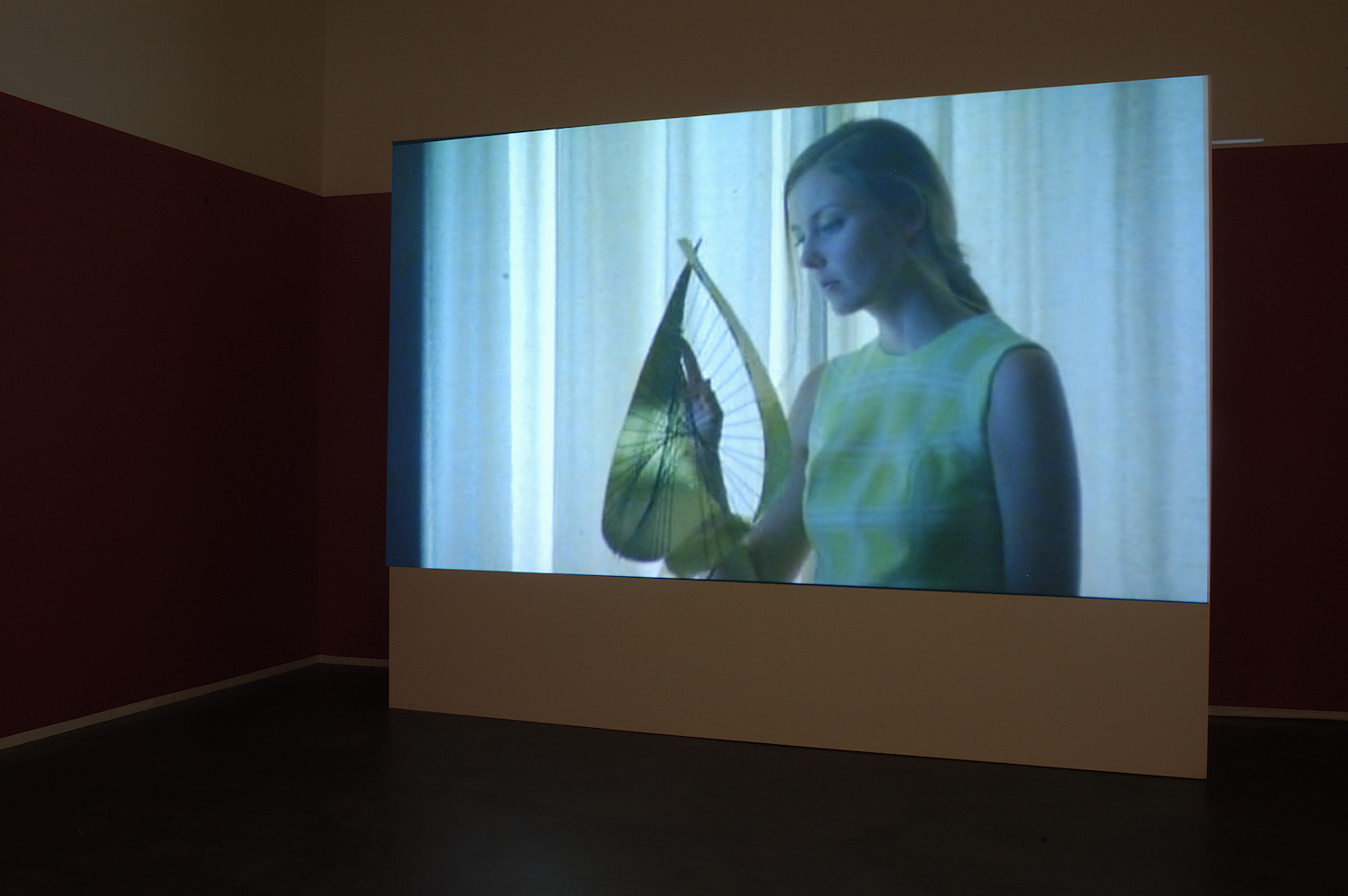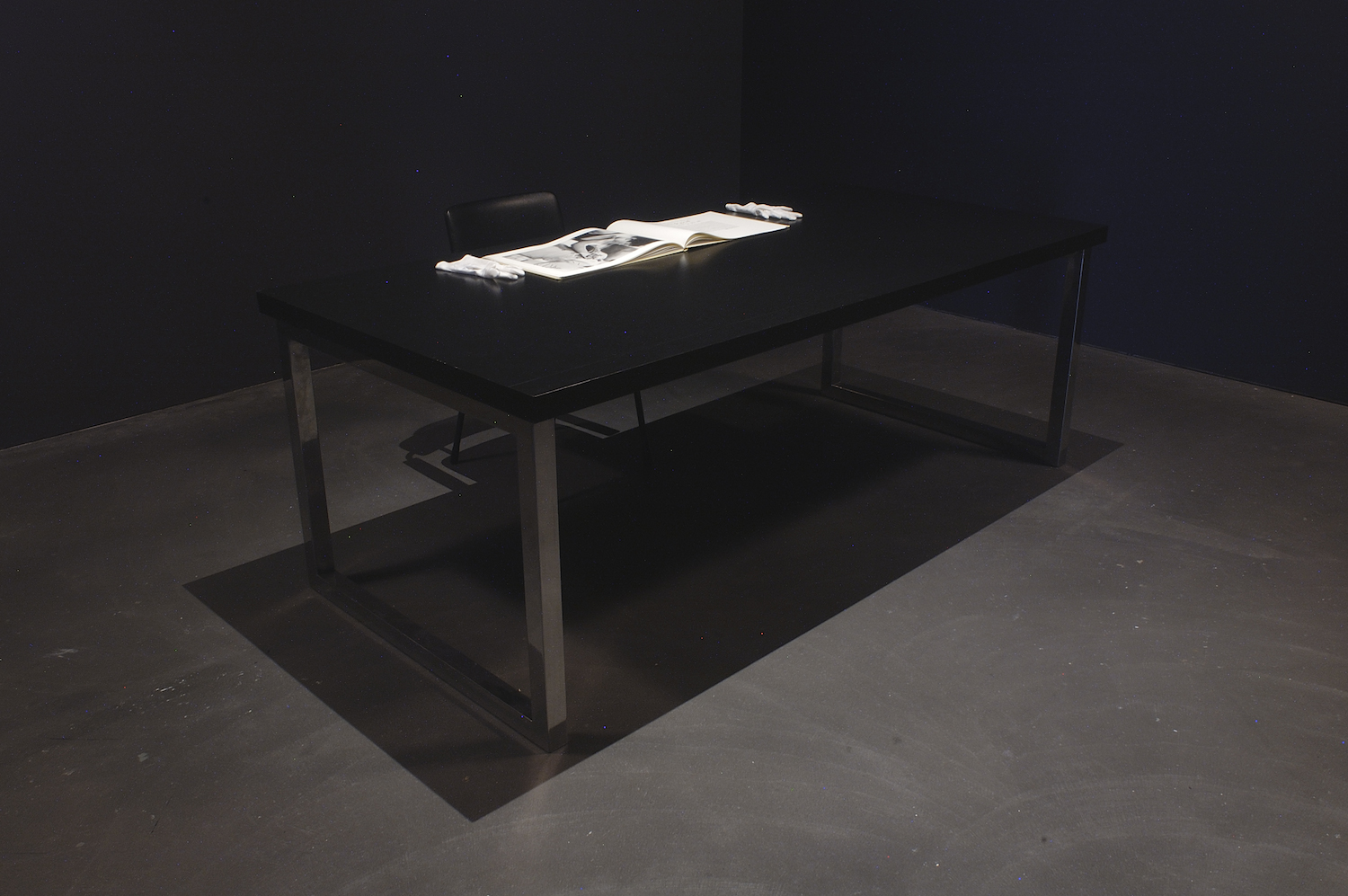Dates: 29 March— 28 May 2007
Opening: 29 March, 7pm
Location: Centraal Museum, Nicolaaskerkhof 10, Utrecht
Curated by Angela Serino for Impakt Festival
The exhibition was a collaboration between Impakt Festival and Centraal Museum, Utrecht.
In her recent body of work, which comprises the video trilogy “Portland Place”, “Keeling House” and “Villa Mairea”, and the film “Interiors”, the Austrian artist Ursula Mayer further articulates her investigation of the female subject, by questioning conventional cinematic representation of gender and by interacting in an original way with specific architectural and interior spaces.
All the works in the exhibition are shot in well-known architectonic contexts: the interior of a Victorian house in London, a modern block of flats (Keeling House in London) and the Alvar Aalto modernist villa in Finland in the trilogy, and E. and U. Goldfinger home in Hampstead in “Interiors”. Although the titles of the works allude to existing physical spaces, the subject of investigation is not just a series of purely architectural artefacts, but the inner psychological space, which progressively unfolds through the interaction between the camera, the performer and the room, thus confirming Mayer’s strong interest in how emotional conditions are embodied in specific sites.
In the video trilogy “Portland Place”, “Keeling House” and “Villa Mairea”, the camera moves with a tactile, almost physical, approach and follows the protagonist (a dancer) into the different rooms. We see the same protagonist strolling through the various spaces, sitting down and stretching out. She
wanders as an ‘erotic nomad’ caught by the camera just before or at the end of an action, while details of objects –artworks, and furnishings – and her body complete the sequence.
The result are short films which suggest a mood, a state of mind, an excerpt from a possible story and an emotional inner life constructed through dialogue and partially blending with the physical surroundings.
Throughout Mayer’s work, the filmic approach of Michelangelo Antonioni in “L’Avventura” (1960), “La Notte” (1961) and “L’Eclisse” (1962) provides a clear point of reference. As in his films, Mayer’s work also uses the domestic environment, the dynamic of watching and the waiting typical of
‘dead-time’ as central elements through which the psychological make-up of the character portrayed are suggested and described.
This combination of architecture, performance and moving images, which the three videos explore in different ways, reaches a high point in “Interiors”. Here, the private home of Erno and Ursula Goldfinger becomes a fictional character ‘per se’, while the gestures and movements of the two female protagonists build a dialogical narration catalyzed around an artwork: the reconstruction of
Barbara Hepworth’s renowned sculpture “Orpheus”.
The result is a re-enactment of iconic modernist space, which is particularly successful in suggesting a multi-layered open narrative as well as providing a fascinating choreography of objects, lines, structures and colours.
In this way, Mayer is not proposing a nostalgic idealization of the past, but an alternative way of reading it, which suggests “an awareness of the ellipses of time”.
Ursula Mayer (Vienna 1970). Lives and works in London.
